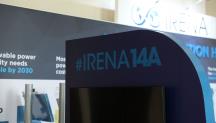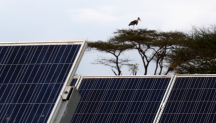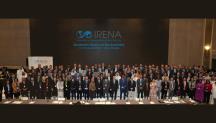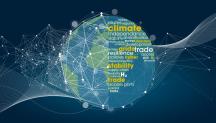

Green hydrogen: a key enabler to broaden the potential of renewable power solutions in hard-to-abate sectors
Newsletter
Accelerating the energy transition requires a rapid expansion of renewables-based electricity generation. According to IRENA’s 1.5°C Scenario, by 2050, variable renewable energy (VRE) will represent 70% of the total global energy generation, from today’s 9%. In this context, green hydrogen emerges as key complement to make the most of the massive renewable production.
Green hydrogen, produced from renewable electricity, is meant to serve various purposes in future energy systems. First, it should replace the current close to 100 Mt hydrogen produced from fossil fuels used as feedstock in chemical processes or refinery applications. Second, new demand for green hydrogen may come from those hard-to-abate sectors that may not be directly electrified like the steel, chemicals, aviation and shipping.
Given those roles, hydrogen is expected to experience a remarkable grow in terms of gross production. IRENA’s 1.5°C Scenario, by 2050, from today’s negligible levels to 14% of the global final energy consumption in 2050. To reach this production level, more than 5,500 GW of cumulative installed capacity of electrolysers should be in place by 2050 and 25,000 TWh of input electricity will be required, which is roughly the total among of electricity consumed in the world at present.
Yet, knowing where the efforts should be put in terms of green hydrogen applications is not enough. To really reap all the potential benefits, a full transformation of the energy system is needed. And, we don’t talk exclusively to the technological transformation but as IRENA’s Innovation Landscape for Smart Electrification elaborates, equally important, to an integrated approach that requires innovative approaches in areas such as regulation, business models or system planning and operation.
In fact, the creation of a truly global hydrogen market depends on this systemic approach, essential to realise the full value of a green hydrogen economy. This “smart indirect electrification” approach must reflect on key aspects such the amount of renewable capacity required to produce green hydrogen while ensuring an effective integration of grid-connected electrolysers, possible grid expansions requirements and availability of flexibility infrastructure and operation such as demand side management. For instance, smart and flexible operation of electrolysers can provide a range of valuable services to the power system, such as the reduction of peak loads or grid congestions.
Additionally, the identification of locations with high renewable resource availability that ensures the cost-effective operation of electrolysers and the infrastructure to transport hydrogen or its derivates to consumption sites are deemed crucial. Missing only one of those aspect could lead to long-term lock-in effects and the failure of the entire strategies to set up a full hydrogen economy.
One of COP28’s core pillars is fast tracking the energy transition and slashing emissions in half by 2030. Within this context, IRENA will be hosting several sessions at its Innovation Week which bring together leaders, experts, industry representatives and policy makers to discuss cutting edge innovations focused on speeding up the extremely deemed energy transformation via innovative solutions, including discussing on a more effective deployment of green hydrogen.
Given all the above and to keep advancing in actions to harness the green hydrogen benefits for the integration of VRE, please request an invitation to IRENA’s upcoming Innovation Week, and attend the dedicated sessions happening on the 26th of September on Walking the last mile of the energy transition with green hydrogen, Solutions to decarbonise iron and steel sector, the chemical and petrochemical sector and the shipping and aviation sector.
Read the Innovation Landscape report and tune it for updates from the IRENA Innovation Week 2023.




